Saigon, the Pearl of the Far East, captivates visitors not only with its vibrant pace of life but also with heroic historical chapters reflected in its architecture. In the heart of the bustling city, Independence Palace stands as a historical witness, a cultural tourism destination not to be missed. This place is not only a special national monument but also a symbol of peace and national reunification. Let “Du lịch khắp thế gian” (Travel Around The World) guide you to explore Independence Palace, learn about opening hours, ticket prices, and unique travel experiences at this historical site.
Independence Palace – A Historical Witness in the Heart of Saigon
Located in a prime location at 135 Nam Ky Khoi Nghia Street, Ben Thanh Ward, District 1, Ho Chi Minh City, Independence Palace carries a long story throughout Vietnamese history. Construction began in 1868 under French rule, initially named Norodom Palace. This structure was first used as the residence and workplace of the Governor of Cochinchina, and later the Governor-General of French Indochina.
Through many historical upheavals, Independence Palace became a symbol associated with the Republic of Vietnam government, serving as the workplace and residence of the President until the historic day of April 30, 1975. Today, Independence Palace is not only a special national historical relic but also an attractive cultural tourist destination, drawing large numbers of domestic and international visitors to explore and learn about the nation’s heroic past. Visiting Independence Palace allows you not only to admire its unique architecture but also to relive the heroic historical moments of the nation.
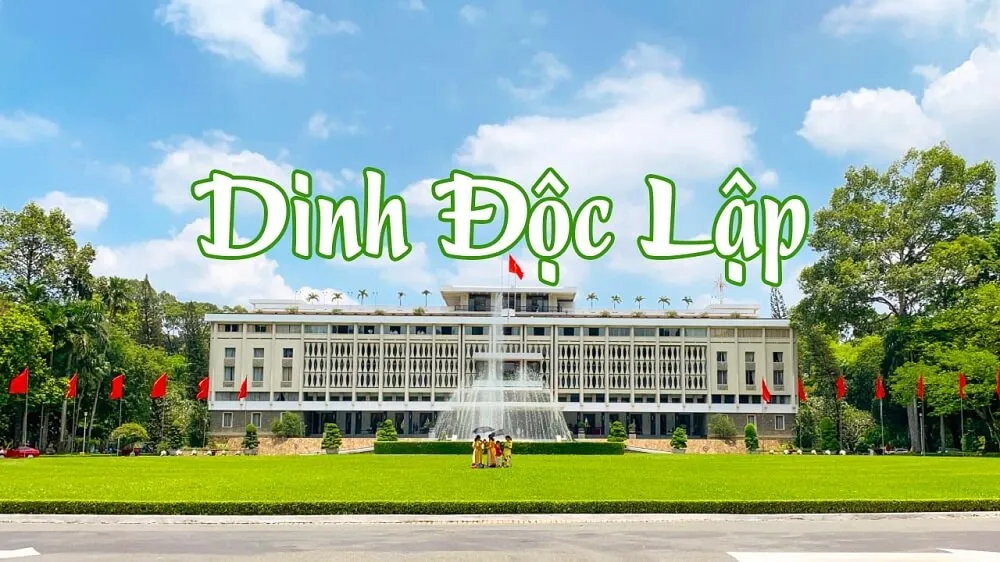
Journey to Explore the History of Independence Palace Through Each Period
Visiting Independence Palace is not just about seeing an architectural work, but also a journey back in time to learn about the palace’s formation and development history. Every brick, every corridor, every room in Independence Palace carries its own historical stories, contributing to recreating a turbulent period of Vietnam.
Historical Imprints of the Formation of Independence Palace
The history of Independence Palace began in 1868 when the Governor of Cochinchina, Lagrandière, officially started the construction of the Governor’s Palace in Saigon. This project was built to serve as a residence and workplace for the French colonial government apparatus.
In 1962, a significant historical event completely changed the face of Norodom Palace. A bombing severely damaged a large part of the palace. Instead of restoring it, President Ngo Dinh Diem decided to completely demolish it and build a new palace on the old foundations. This new structure was named Independence Palace, symbolizing the independence of the Republic of Vietnam.
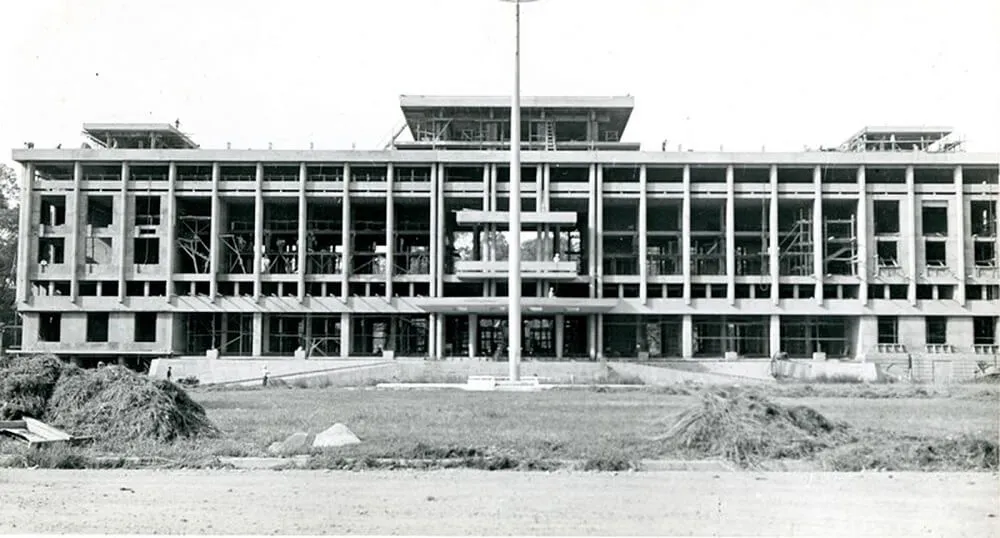
Independence Palace was rebuilt with modern and unique architecture, standing 26 meters high, located on a 12-hectare campus, with a usable area of up to 20,000m². The palace includes 3 main floors, 2 mezzanine floors, a ground floor, 2 basements, and a rooftop with a helicopter pad. With over 100 rooms decorated in different styles, Independence Palace is not only a massive architectural work but also a unique artwork, showcasing the talent of architect Ngo Viet Thu and the team of talented artisans.
Name Changes of Independence Palace Through History
Independence Palace has undergone several name changes, reflecting the historical and political upheavals of the country:
- 1871 – Norodom Palace: The original name when first built, named after Cambodian King Norodom I.
- 1871 – 1887 – Governor’s Palace: Reflecting its function as the residence and workplace of the French Governor of Cochinchina.
- 1887 – 1945 – Governor-General’s Palace: Became the headquarters of the Governor-General of French Indochina, the highest authority of France in the region.
- 1955 – Independence Palace: President Ngo Dinh Diem renamed it Independence Palace after the Republic of Vietnam government took over, signifying national sovereignty and independence.
The name Independence Palace has been maintained to this day, becoming a symbol of peace, reunification, and an indispensable part of modern Vietnamese history.
Visiting Independence Palace: Exploring Unique Areas
Visiting Independence Palace offers tourists an exciting exploration journey with many unique areas, each with its own characteristics, recreating the living and working space of the former Republic of Vietnam government.
Fixed Area – Living and Working Space of the Former Government
The fixed area inside Independence Palace preserves intact the rooms, furniture, and arrangements from the Republic of Vietnam era. With over 100 rooms designed and decorated in different styles, this area provides visitors with the most authentic view of the life and work of Saigon government officials before 1975.
Some notable rooms in the fixed area:
- State Banquet Hall: The venue for important ceremonies, receptions for international guests, and diplomatic events. The hall is luxuriously decorated, reflecting the grandeur and power of the government.
- Cabinet Meeting Room: The meeting room of the Republic of Vietnam government, where important national policies were decided. Visitors can imagine the tense and serious working atmosphere in this room.
- War Room: The military command center, where military operations during the Vietnam War were directed. The room is equipped with communication devices, maps, and military documents, recreating the urgent atmosphere of wartime.
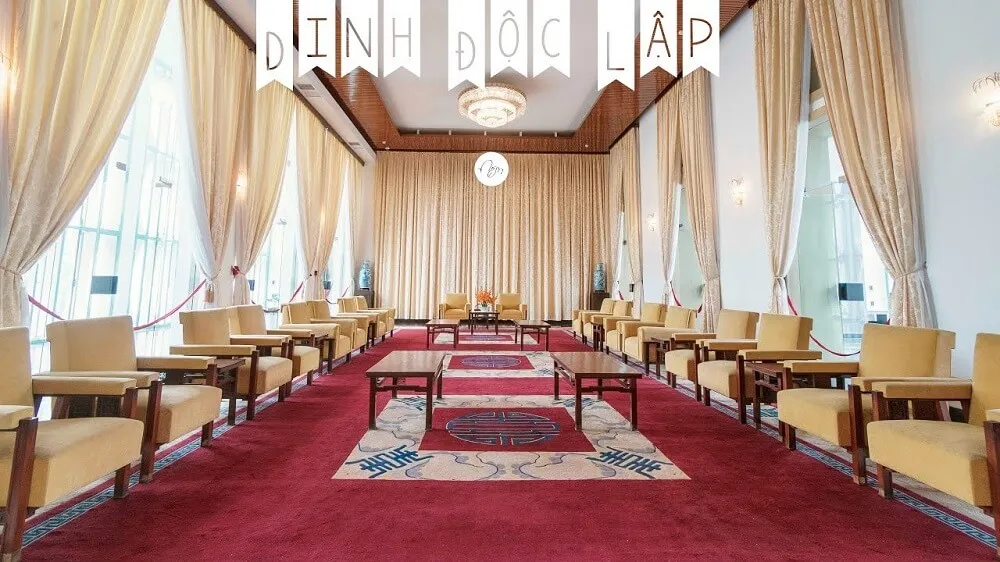
Thematic Area – Diverse and Attractive Exhibition Space
The thematic area at Independence Palace is where temporary exhibitions are organized with diverse themes, revolving around Vietnamese history, culture, and society. Exhibitions are regularly updated, providing visitors with new experiences and useful knowledge.
Visiting the thematic area, tourists have the opportunity to learn more deeply about important historical events, unique traditional cultural features of Vietnam, as well as contemporary social issues. This is an ideal space for visitors to broaden their knowledge and gain a more multi-dimensional perspective on the country and people of Vietnam.
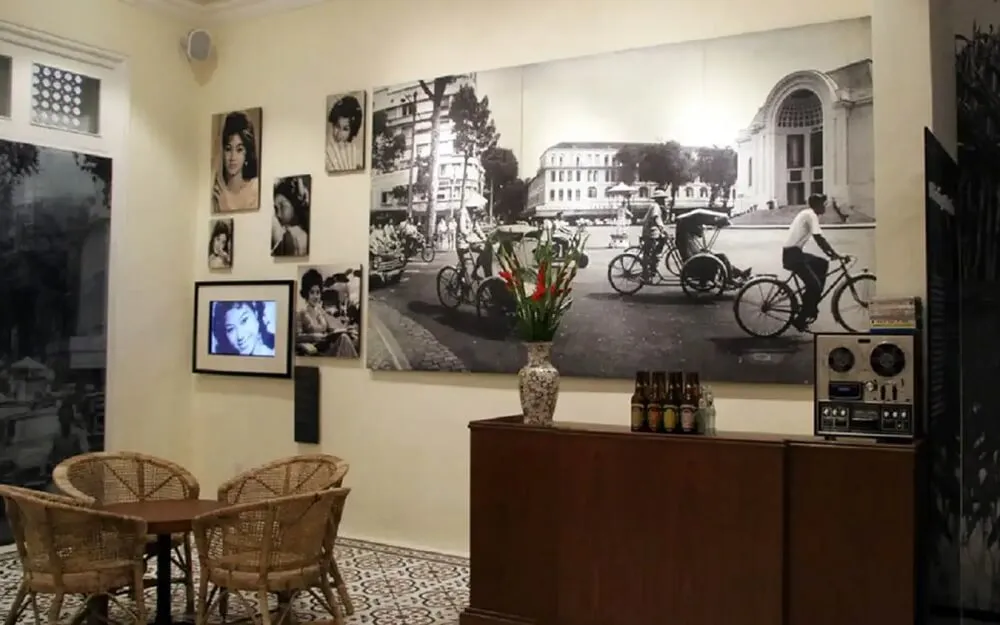
Additional Area – Admiring Outdoor Artifacts and Green Space
The additional area is a newly expanded space at Independence Palace, offering visitors more diverse sightseeing experiences. In this area, visitors can admire outdoor artifacts, relax in the green space, and learn about special historical landmarks.
Highlights in the additional area:
- Flower gardens, lawns, and lakes: A green, peaceful space, contrasting with the solemnity of the main palace area. This is where visitors can rest, relax, and enjoy the fresh air.
- Tank and aircraft display area: Displaying military artifacts such as tank T-54B number 843 and tank T-59 number 390, the tanks that crashed through the gates of Independence Palace on April 30, 1975. In addition, this area also displays fighter planes, recreating the heroic spirit of our army and people during the anti-American resistance war.
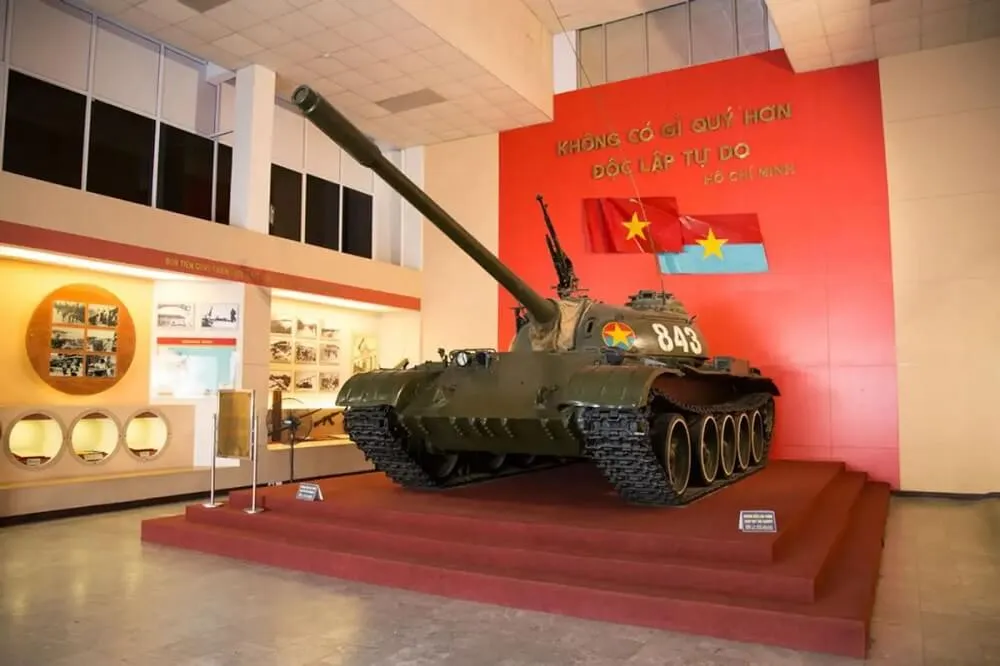
Detailed Guide to Visiting Independence Palace from A to Z
To have a complete and meaningful visit to Independence Palace, visitors need to understand basic information about transportation, opening hours, ticket prices, and important notes when visiting.
Transportation to Independence Palace
Independence Palace is located in the center of District 1, Ho Chi Minh City, so getting here is very convenient. Visitors can choose many different means of transport:
- Bus: Bus routes number 03, 04, 05, 06, 14 all have stops near Independence Palace. This is an economical and convenient public transport option for tourists.
- Private vehicles (motorbike, car): Visitors can drive their own motorbikes or cars to Independence Palace. However, it is necessary to be aware of traffic conditions and parking spaces in the city center area.
- Taxi, ride-hailing services: Taxis and ride-hailing services are fast and convenient means of transport. Visitors can easily book a car through online booking applications such as Xanh SM, Grab, Be, etc.
In particular, Xanh SM is the first pure electric taxi service in Vietnam, offering a smooth, quiet, and environmentally friendly travel experience. Visitors can book Xanh SM cars via the app or call hotline 1900 2088 for quick service and attractive offers.

Opening Hours and Entrance Fees for Independence Palace
- Opening hours: Independence Palace is open every day of the week, including holidays and weekends.
- Ticket sales hours: 8:00 AM – 3:30 PM
- Main building visiting hours: 8:00 AM – 4:30 PM
- “From Norodom Palace to Independence Palace 1868 – 1966” exhibition house opening hours: 8:00 AM – 4:30 PM
- Entrance fees: Independence Palace has many different ticket types, depending on the visitor’s needs.
- Independence Palace entrance ticket:
- Adults: 40,000 VND/person
- Students: 20,000 VND/person (student card required)
- Children: 10,000 VND/person
- Independence Palace and exhibition house entrance ticket:
- Adults: 65,000 VND/person
- Students: 45,000 VND/person (student card required)
- Children: 15,000 VND/person
- Independence Palace entrance ticket:
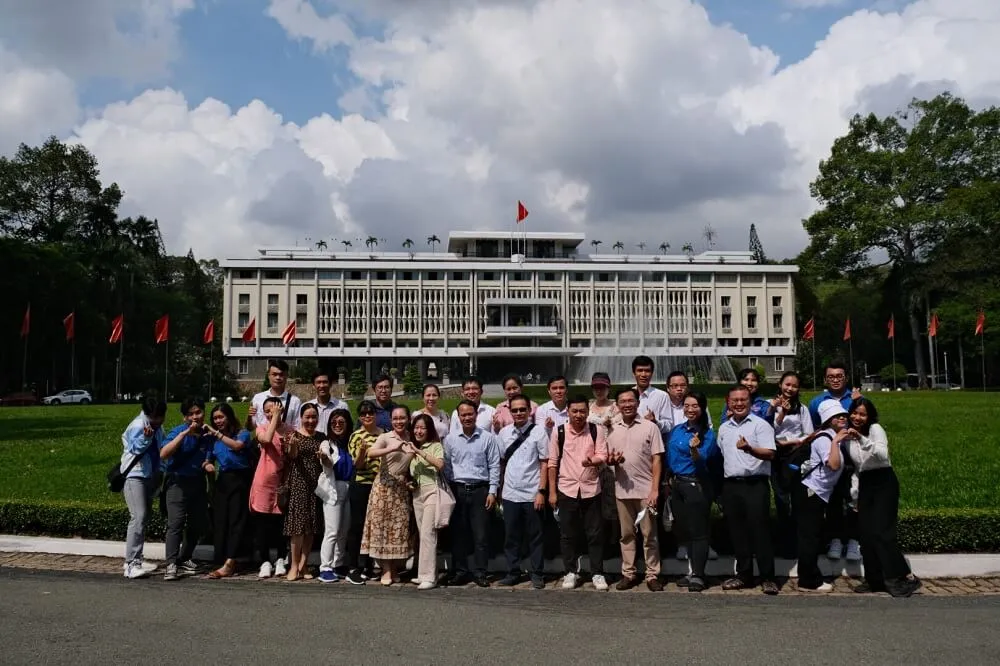
Important Notes When Visiting Independence Palace
To ensure a smooth and meaningful visit to Independence Palace, visitors should note the following:
- Dress code: Independence Palace is a historical site, so visitors should choose polite, discreet clothing, showing respect for the cultural and historical space.
- Footwear: Choose sports shoes or comfortable footwear that is easy to move around in because the Independence Palace campus is quite large and visitors will have to walk a lot.
- Luggage: Limit carrying bulky luggage. There is a luggage storage service at the entrance, visitors should only bring necessary items such as phones, cameras, wallets.
- Prohibited items: Do not bring food, drinks (especially glass bottles), flammable and explosive materials, or sharp objects into the visiting area.
- Visitor attitude: Maintain order, do not make noise, do not touch exhibits, do not write or draw on walls or objects in the palace.
- Environmental hygiene: Maintain general hygiene, dispose of garbage in the designated places.
- Respect for ceremonies: If visiting during special events or ceremonies, visitors should respect the ceremonial space and follow the instructions of the organizers.

Conclusion
Visiting Independence Palace is a meaningful journey of cultural and historical exploration, providing visitors with profound experiences about the nation’s heroic past. From unique architecture, rich exhibition space to fascinating historical stories, Independence Palace deserves to be a must-visit destination when coming to Saigon. Plan your trip to Independence Palace today to fully appreciate the historical value and timeless beauty of this special national monument.